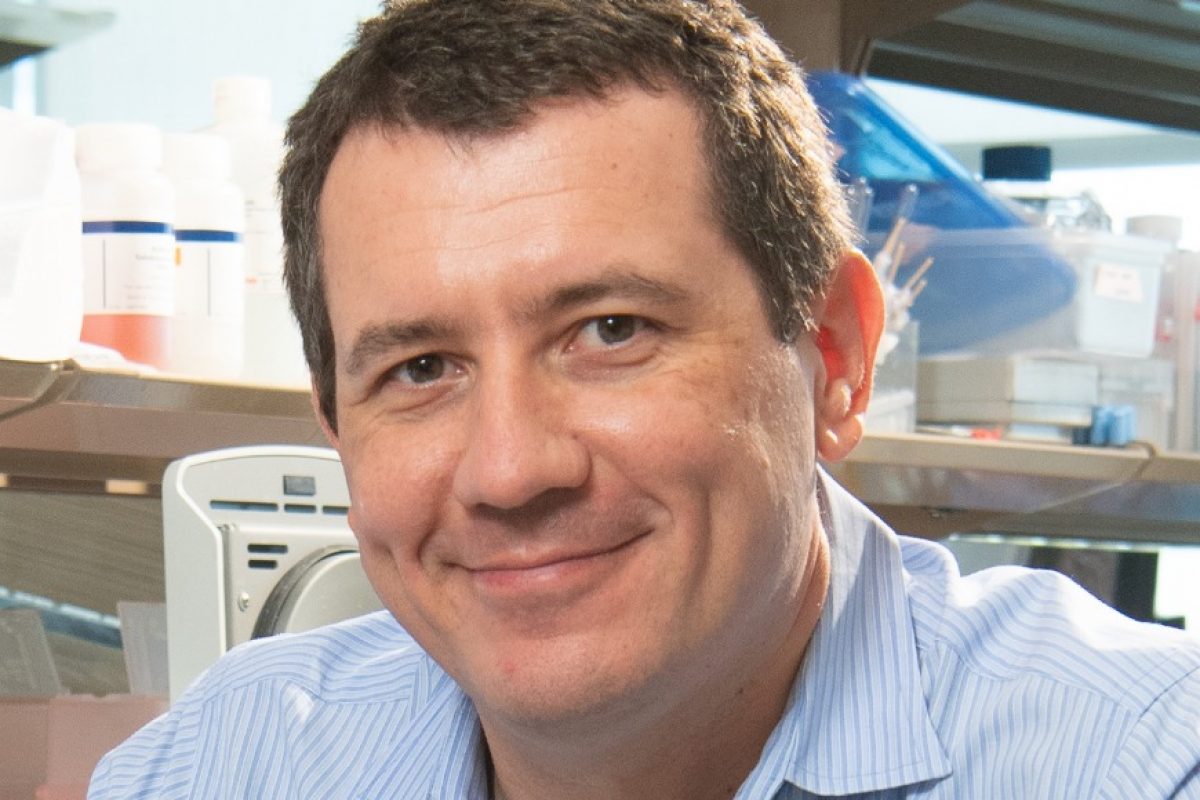1. Centromere structural biochemistry. The work in my lab in this area is focused on understanding the physical nature of the epigenetic information generated by the incorporation of the histone H3 variant, CENP-A into chromatin. How do the DNA and proteins work together to form a chromatin domain that is distinguished from the rest of the chromosome as the site to build a mitotic kinetochore and as the site for persistent centromere maintenance through cell divisions? Our crystal structure of CENP-A, described in Sekulic et al., 2010 was the first of this protein from any species, in any context, and represents a landmark study in the centromere field. We also combined a battery of biophysical approaches alongside cell-based functional assays to identify CENP-C as an essential collaborator in maintaining centromere identity in Falk et al., 2015. In addition, we reconstituted the core centromeric nucleosome complex (CCNC) that includes both CENP-C and CENP-N and defined their independent modes of binding and roles of each in maintaining centromere identity in Guo et al., 2017. In the course of these studies, we found that CENP-C surprisingly alters the shape and the dynamics of the CENP-A nucleosome when it binds, revealing a novel mode of regulation that nucleosome-binding proteins can bring to bear on chromatin.
Allu, P.K., Dawicki-McKenna, J.M., Van Eeuwen, T., Slavin, M., Braitbard, M., Xu, C., Kalisman, N., Murakami, K., and B.E. Black*. 2019. Structure of the human core centromeric nucleosome complex. Curr. Biol., 29:2625-2639. (*corresponding author) [PMCID: PMC6702948]
Guo, L.Y., P.K. Allu, L. Zandarashvili, K.L. McKinley, N. Sekulic, J.M. Dawicki-McKenna, D. Fachinetti, G.A. Logsdon, R.M. Jamiolkowski, D.W. Cleveland, I.M. Cheeseman, and B.E. Black*. 2017. Centromeres are maintained by fastening CENP-A to DNA and directing an arginine anchor-dependent nucleosome structural transition. Nat. Commun., 8:15775. (*corresponding author) [PMCID: PMC5472775]
Falk, S.J.†, L.Y. Guo†, N. Sekulic†, E.M. Smoak†, T. Mani, G.A. Logsdon, K. Gupta, L.E.T. Jansen, G.D. Van Duyne, S.A. Vinogradov, M.A. Lampson, and B.E. Black*. 2015. CENP-C reshapes and stabilizes CENP-A nucleosomes at the centromere. Science, 348:699-703. (*corresponding author; †contributed equally) [PMCID: PMC4610723]
Sekulic, N., E.A. Bassett, D.J. Rogers, and B.E. Black*. 2010. The structure of (CENP-A—H4)2 reveals physical features that mark centromeres. Nature, 467:347-351. (*corresponding author) [PMCID: PMC2946842]
Black, B.E., D.R. Foltz, S. Chakravarthy, K. Luger, V.L. Woods Jr., and D.W. Cleveland. 2004. Structural determinants for generating centromeric chromatin. Nature 430:578-582.
2. Aurora B-mediated mitotic error correction. While studying patient-derived cells harboring neocentromeres, my team made the observation that the Aurora B kinase is highly enriched at chromosomes that have spindle attachment errors. This appears to be quite a fundamental observation. We find this to be a common feature of healthy, diploid cells, but one that is absent from the aneuploid, tumor-derived cells typically used for mammalian mitosis research. Further investigation revealed dynamic modulation of Aurora B levels at each centromere in a chromosome autonomous fashion that greatly expands the dynamic range of this kinase in phosphorylating kinetochore substrates. It appears that this feedback leads to highly efficient mitotic error correction; a discovery that greatly impact understanding of Aurora B function.
Zaystev, A.V., D. Sagura-Peña, M. Godzi, A. Calderon, E.R. Ballister, R. Stamatov, A.M. Mayo, L. Peterson, B.E. Black, F.L. Ataullakhanov, M.A. Lampson, E.L. Grishchuk. 2016. Bistability of a coupled Aurora B kinase-phosphatase system in cell division. Elife, 5:e10644. [PMCID: PMC4798973]
Salimian, K.J., E.R. Ballister, E.M. Smoak, S. Wood, T. Panchenko, M.A. Lampson*, and B.E. Black*. 2011. Feedback control in sensing chromosome biorientation by the Aurora B kinase. Curr. Biol., 21:1158-1165. (*corresponding authors) [PMCID: PMC3156581]
Bassett, E.A., S. Wood, K.J. Salimian, S. Ajith, D.R. Foltz, and B.E. Black*. 2010. Epigenetic centromere specification directs Aurora B accumulation but is insufficient to efficiently correct mitotic errors. J. Cell Biol., 190:177-185. (*corresponding author) [PMCID: PMC2930274]
3. Centromere chromatin assembly. Given the importance of CENP-A in defining the properties of centromeric nucleosomes, one key question in chromatin biology and epigenetics is that of how histone variants (including CENP-A) are delivered to – and incorporated into – the correct nucleosomes at appropriate locations, and how they are ‘sorted’ from each other by so-called histone chaperones. Starting with the discovery of the cis-acting element within CENP-A that targets it to centromeres (which I called the CENP-A targeting domain, CATD), I have contributed highly to the understanding of these processes. My group identified the precise mode of recognition of CENP-A by HJURP using a very effective combination of cell-based functional assays, conventional biochemistry, and high-resolution biophysical approaches. Using these data, we formulated a new model for centromere assembly in which HJURP stabilizes the histone fold domains of both CENP-A and its partner histone H4 for a substantial portion of the cell cycle prior to mediating chromatin assembly at the centromere. More recently we devised a ChIP-seq-based strategy to probe centromeric chromatin architecture at very high-resolution with a study (Hasson et al., 2013; 3b, below) that resolved a longstanding conflict regarding the nature of human centromeric nucleosomes assembled by HJURP. We’ve also used a new approach to establish a new functional centromere at an ectopic locus to understand the relationship between the elements that direct new CENP-A chromatin assembly and the first steps in centromere establishment. These findings led to our landmark development of new types of human artificial chromosomes (HACs) that improve the technology and bring mammalian synthetic chromosomes one step closer to reality in Logsdon et al., 2019.
Logsdon, G.L., C.W. Gambogi, M.A. Liskovykh, E.J. Barrey, V. Larionov, K.H. Miga, P. Heun, and B.E. Black*. 2019. Human artificial chromosomes that bypass centromeric DNA. Cell, 178:624-639. (*corresponding author) [PMCID: PMC6657561]
Logsdon, G.L., E. Barrey, E.A. Bassett, J.E. DeNizio, L.Y. Guo, T. Panchenko, J.M. Dawicki-McKenna, P. Heun, and B.E. Black*. 2015. Both tails and the centromere targeting domain of CENP-A are required for centromere establishment. J. Cell Biol., 208:521-531. (*corresponding author) [PMCID: PMC4347640]
Hasson, D. †, T. Panchenko†, K.J. Salimian†, M.U. Salman, N. Sekulic, A. Alonso, P.E. Warburton, and B.E. Black*. 2013. The octamer is the major form of CENP-A nucleosomes at human centromeres. Nat. Struct. Mol. Biol., 20:687-695. (*corresponding author; †contributed equally and listed in alphabetical order) [PMCID: PMC3760417]
Bassett, E.A., J. DeNizio, M.C. Barnhart-Dailey, T. Panchenko, N. Sekulic, D.J. Rogers, D.R. Foltz, and B.E. Black*. 2012. HJURP uses distinct CENP-A surfaces to recognize and to stabilize CENP-A/ histone H4 for centromere assembly. Dev. Cell, 22: 749-762. (*corresponding author) [PMCID: PMC3353549]
Black, B.E.*, and D.W. Cleveland*. 2011. Epigenetic centromere propagation and the nature of CENP-A nucleosomes. Cell, 144:471-479. (*corresponding authors) [PMCID: PMC3061232]
4. Hydrogen/deuterium exchange-mass spectrometry (HXMS) with chromatin proteins. My group has emerged as the world leader in applying HXMS to chromatin-associated proteins. This powerful approach probes structure and dynamics in solution, and is a strong complement to more conventional structural biology techniques. We have used it successfully to gain insight into a diverse set of chromatin assembly complexes and natively unstructured nucleosomal DNA binding proteins, gaining insight into complexes that have been recalcitrant to other standard approaches (e.g. crystallography and NMR). Along the way we have advanced HXMS technology and dispelled the earlier misconceptions that the approach is low-resolution (it is not, and we have achieved near amino acid resolution of HX behavior on several proteins) and merely a probe of what happens on the surfaces of proteins (it is not, and we have gained important insight into the core of individual proteins and proteins within large multi-subunit complexes).
Zandarashvili, L.†, M.F. Langelier†, U.K. Velagapudi, M.A. Hancock, J.D. Steffen, R. Billur, Z.M. Hannan, A.J. Wicks, D.B. Krastev, S.J. Pettitt, C.J. Lord, T.T. Talele, J.M. Pascal*, and B.E. Black*. 2020. Structural basis for allosteric PARP-1 retention on DNA breaks. Science, 368:eaax6367. (*corresponding authors; †contributed equally) [PMCID: PMC7347020]
Langelier, M.F., L. Zandarashvili, P.M. Aguiar, B.E. Black*, and J.M. Pascal*. 2018. NAD+ analog reveals PARP-1 substrate-blocking mechanism and allosteric communication from catalytic center to DNA-binding domains. Nat. Commun., 9:844. (*corresponding authors) [PMCID: PMC5829251]
Dawicki-McKenna, J.M.†, M.F. Langelier†, J.E. DeNizio, A.A. Riccio, C.D. Cao, K.R. Karch, M. McCauley, J.D. Steffen, B.E. Black*, and J.M. Pascal*. 2015. PARP-1 activation requires local unfolding of an autoinhibitory domain. Mol. Cell, 60:755-768. (*corresponding author; †contributed equally) [PMCID: PMC4712911]
DeNizio, J., S.J. Elsässer, and B.E. Black*. 2014. DAXX co-folds with H3.3/H4 using high local stability conferred by the H3.3 variant recognition residues. Nucleic Acids Res., 42:4318-4331. (*corresponding author) [PMCID: PMC3985662]
Hansen, J.C.*, B.B. Wexler, D.J. Rogers, K.C. Hite, T. Panchenko, S. Ajith, and B.E. Black*. 2011. DNA binding restricts the intrinsic conformational flexibility of Methyl CpG Binding Protein 2 (MeCP2). J. Biol. Chem., 286:18938-18948. (*corresponding authors) [PMCID: PMC3099709]
5. Centromere inheritance through the mammalian germline. This is a relatively recent research direction in my group, and we are already making headway into understanding how the epigenetic centromere mark represented by nucleosomes containing CENP-A is successfully transmitted through the male and female germlines. Both male and female germlines present major challenges to the centromere, and we are using mouse as a model system to understand how this faithfully occurs.
Das, A., A. Iwata-Otsubo, A. Destouni, J.M. Dawicki-McKenna, K.G. Boese, B.E. Black*, and M.A. Lampson*. 2022. Epigenetic, genetic and maternal effects enable stable centromere inheritance. Nat. Cell Biol., 24:748-756. (*corresponding authors) [PMCID: PMC9107508]
Lampson, M.A.*, and B.E. Black*. 2017. Cellular and molecular mechanisms of centromere drive. Cold Spring Harb. Symp. Quant. Biol., 82:249-257. (*corresponding authors) [PMCID: PMC6041145]
Iwata-Otsubo, A. †, J.M. Dawicki-McKenna†, T. Akera, S.J. Falk, L. Chmátal, K. Yang, B.A. Sullivan, R.M. Schultz, M.A. Lampson*, and B.E. Black*. 2017. Expanded satellite repeats amplify a discrete CENP-A nucleosome assembly site on chromosomes that drive in female meiosis. Curr. Biol., 27:2365-2373. (*corresponding authors; †contributed equally) [PMCID: PMC5567862]
Smoak, E.M., P. Stein, R.M. Schultz, M.A. Lampson*, and B.E. Black*. 2016. Long-term retention of CENP-A nucleosomes in mammalian oocytes underpins transgenerational inheritance of centromere identity. Curr. Biol., 26:1110-1116. (*corresponding authors) [PMCID: PMC4846481]






